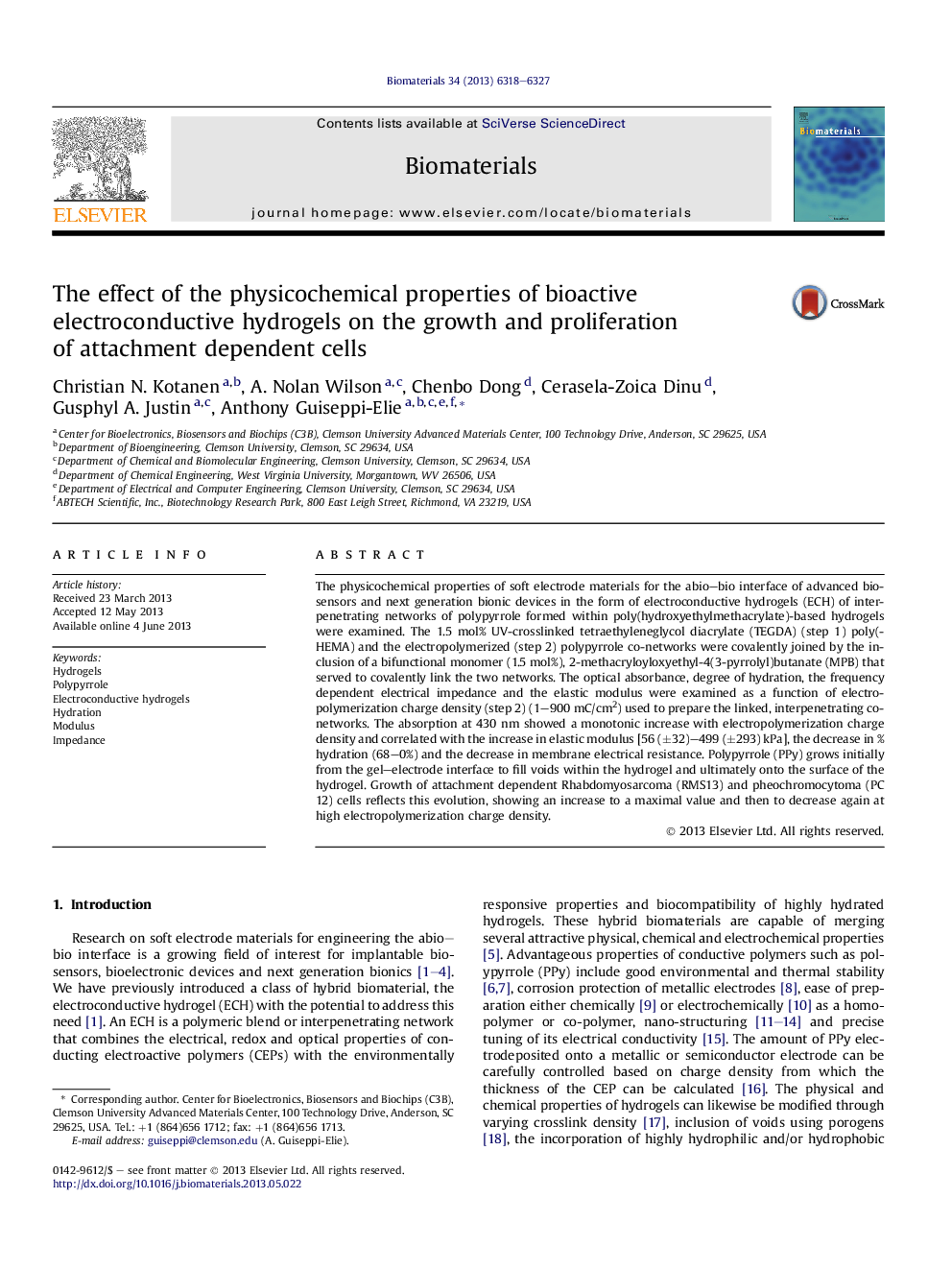| Article ID | Journal | Published Year | Pages | File Type |
|---|---|---|---|---|
| 10228223 | Biomaterials | 2013 | 10 Pages |
Abstract
The physicochemical properties of soft electrode materials for the abio-bio interface of advanced biosensors and next generation bionic devices in the form of electroconductive hydrogels (ECH) of interpenetrating networks of polypyrrole formed within poly(hydroxyethylmethacrylate)-based hydrogels were examined. The 1.5 mol% UV-crosslinked tetraethyleneglycol diacrylate (TEGDA) (step 1) poly(HEMA) and the electropolymerized (step 2) polypyrrole co-networks were covalently joined by the inclusion of a bifunctional monomer (1.5 mol%), 2-methacryloyloxyethyl-4(3-pyrrolyl)butanate (MPB) that served to covalently link the two networks. The optical absorbance, degree of hydration, the frequency dependent electrical impedance and the elastic modulus were examined as a function of electropolymerization charge density (step 2) (1-900 mC/cm2) used to prepare the linked, interpenetrating co-networks. The absorption at 430 nm showed a monotonic increase with electropolymerization charge density and correlated with the increase in elastic modulus [56 (±32)-499 (±293) kPa], the decrease in % hydration (68-0%) and the decrease in membrane electrical resistance. Polypyrrole (PPy) grows initially from the gel-electrode interface to fill voids within the hydrogel and ultimately onto the surface of the hydrogel. Growth of attachment dependent Rhabdomyosarcoma (RMS13) and pheochromocytoma (PC 12) cells reflects this evolution, showing an increase to a maximal value and then to decrease again at high electropolymerization charge density.
Related Topics
Physical Sciences and Engineering
Chemical Engineering
Bioengineering
Authors
Christian N. Kotanen, A. Nolan Wilson, Chenbo Dong, Cerasela-Zoica Dinu, Gusphyl A. Justin, Anthony Guiseppi-Elie,
